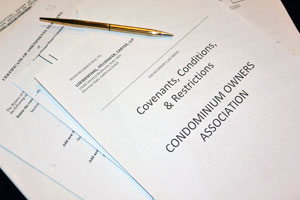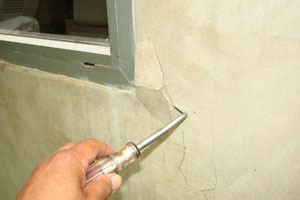LHC Newsletter Vol. 2, No. 5
“Special Issue: Disaster Planning and Recovery”
Introduction:
Over recent months, a variety of disasters have taken place here in California, across the U.S. and throughout the world which should concern us all. Whether it’s earthquakes, fires or even man-made calamities; these events challenge us all to be prepared. In our firm’s ongoing commitment to provide valuable information and support to our clientele and colleagues; we are presenting the first in a series of informational pieces addressing disaster/earthquake planning and recovery. We hope they will prove helpful to you and encourage you to contact us if you have questions or need additional information.
Preparation and Recovery:
Provided in this first section is a summary of those steps which, from our firm’s perspective, are prudent for homeowners, associations, directors and property managers to take in preparation for the insurance claim and/or the recovery process which follow a disaster event.
Documentation and Preparation… before the fact:
Of course, always make sure your insurance coverage and the policy and related documents are up to date and that you understand the coverage in detail. Also, ensure that the documents and/or copies of them will be accessible to you should your home or association suffer damage i.e.: safely store back up documents in an alternate location like a safe deposit box, office, etc.
Inventory and photo document (with a still camera and/or video camera) ALL your personal possessions and valuables. This inventory and the photos/disk/etc. will ALSO need to be safely stored in an alternate location as well as your home/association office/etc.
Documentation and Preparation… after the fact:
Immediately after an event, it is important to remember that your insurance company will EXPECT (and your policy probably REQUIRES) that you act to protect the home/property/etc. EG: Tarp and/or cover exposed wall, roof and other areas; ensure that any leaking pipes or plumbing are shut off and secured.
Fully inspect your home and related areas so as to inventory and photo document ALL DAMAGE. The inventory document/forms you use should accommodate both the pre-event and post-event documentation processes. Your insurance agent should be able to provide forms for this, as can our firm.
Key Steps to Take and Signs to Watch For RE: Recovery & Insurance Claims:
“Steps to Take” include:
- Request, both verbally and in writing that your insurer explain all coverages included in your policy.
- Keep a written diary/log of everything that happens with your claim. Note the date and time of each entry.
- Confirm all conversations with your insurance company and its staff IN WRITING (E.G.: If you are told something like “Don’t worry about any time limit” etc., document who said what and when.)
- Demand partial payment of your claim throughout the process and keep precise records of what payments were made.
- COOPERATE so that your insurer CANNOT ACCUSE you of obstructing the adjustment effort.
- NEVER EXAGGERATE OR OVERSTATE YOUR CLAIM.
- Know if you have extra coverages EG: debris removal, landscaping, etc.
- If you must vacate the home/property; insist on an alternate home/quarters of equal or greater value/quality.
- NEVER ACCEPT the insurer’s “Preferred Contractor” for repairs, rebuilding etc.
- NEVER SIGN A RELEASE.
“Signs to Watch For” include:
- Multiple adjusters i.e.: the insurance company assigns multiple adjusters/employees through the adjustment/claim period.
- The insurance company wants to record a statement from or interview with you, PERHAPS with THEIR attorney present.*
- Whenever the claim seems near resolution/payment; the insurance company states that it is still awaiting receipt of more information.
- The insurance company hires/assigns an attorney to handle the claim.*
*If these occur, it is highly advisable to seek counsel for guidance on how to proceed e.g.: if the insurer requests that you undergo an “Examination Under Oath” (E.U.O.); an attorney for the insurer will most likely be present. Thus, if the insurer elects to have representation, you should as well.
Disaster/Earthquake Planning and Recovery Resources:
Provided here are summary descriptions and web addresses for a variety of earthquake/disaster planning and recovery resources:
The Great Southern California Shake Out – Nov. 12- 16, 2008: http://www.shakeout.org/ – A week of special events featuring the largest earthquake drill in U.S. history, organized to inspire Southern Californians to get ready for big earthquakes, and to prevent disasters from becoming catastrophes.
Dare to Prepare – http://www.daretoprepare.org/ : Earthquake professionals, business and community leaders, emergency managers, and others have joined together to organize Dare to Prepare, an earthquake readiness campaign to raise earthquake awareness and encourage earthquake readiness in Southern California.
“Putting down roots in earthquake country” – http://www.earthquakecountry.info/roots/cover.html : A publication (online link w/ PDF download available) of the Southern California Earthquake Center – which outlines the 7 Steps to preparedness and also provides planning as well as basic regional seismic history, maps and information.
U.S. Geological Survey (USGS) – Earthquake Hazards Program Page – Preparedness & Response Page – http://earthquake.usgs.gov/learning/preparedness.php : A compendium of various USGS information and links relative to earthquake/disaster planning, recovery, education and publications, including links to various disaster relief organizations and information EG: Red Cross, FEMA, etc. including “Putting down roots in earthquake country” for both Southern and Northern California.
Conclusion:
We will continue to publish and distribute information regarding disaster/earthquake planning and recovery, as well as the many other areas of interest to our clients, associated colleagues and others. We encourage you to share this information with those whom you think may benefit from it and also encourage you to contact us at any time with questions or additional informational needs.
© 2008 by Loewenthal, Hillshafer & Carter, LLP. All rights reserved. Permission is granted to reproduce or transmit in any form any part of this newsletter as long as proper attribution to Loewenthal, Hillshafer & Carter, LLP is given. Due to the rapidly changing nature of the law, information contained in this publication may become outdated. As a result, lawyers and all others using this material must research original sources of authority.


